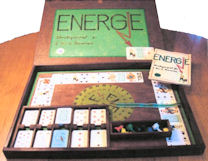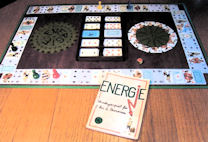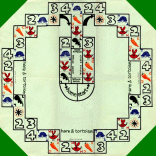
Prototype, 1973 grew out of an original movement mechanism I devised in 1969 for an abortive game called Space Race. (It was the year of the first moon landing.) Development was remarkably rapid: invented 13 October 1973, tested 20 October, revised and replayed 4 November, play-tested soon after by the Games & Puzzles review panel, and licensed to the then recently-founded publisher Intellect Games on 17 December.
First edition
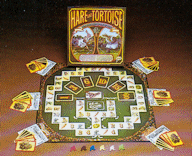
Intellect Games, 1974
Ravensburger 1978
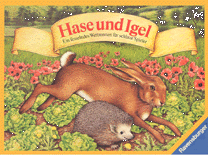
Ravensburger 1978
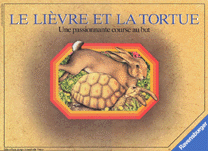
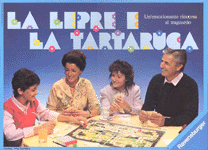
French and Italian versions
Having discovered by now that H&T was not really a kids' game, Ravensburger produced this more restrained box design for the French edition, which was also used for their American English-language edition.
Waddingtons 1980
With the demise of Intellect Games and its purchaser, the UK licence was taken up in 1980 by Waddingtons House of Games, with abysmal design and production values including a reduction to a maximum of four players to save on production costs. They seem also to have sublicensed it to Majora, a Portuguese company. Thomas Malloy kindly sent me a picture of "A Lebre e a Tartaruga" of which he purchased an old, battered copy (here prettied up for reproduction).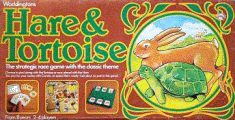
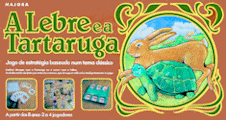
Waddingtons 1980, with Portuguese sub-licence
Waddingtons extras
Waddingtons also produced a promotional version of the game in which carrots were replaced by glasses of Britvic fruit juice. In 2009 that found this image of an edition of it evidently sublicensed by Waddingtons to the former Australian games company John Sands.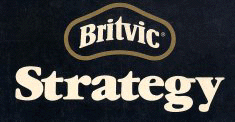
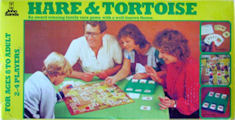
The Britvic promotional and the Australian edition
Scandinavia
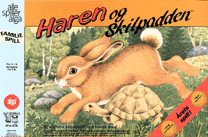
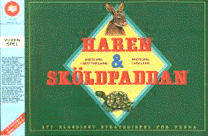
Norwegian edition and more sedate Swedish design
Back to UK: Gibsons
In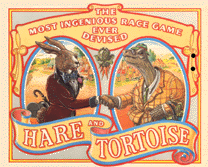
Abacus 2000
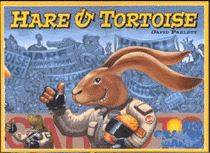
Abacus/Rio Grande
Back to Ravensburger
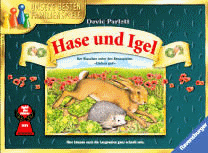
Ravensburger 2008
Gibsons again
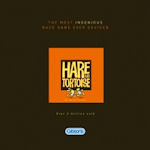
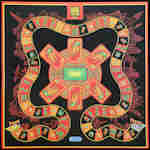
Gibsons 2010: box and board
Devir Iberia
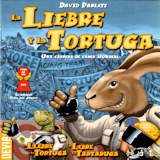
On to East Asia
Broadway Games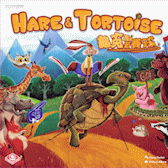
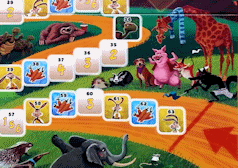
Chinese box and board (detail)
A French reimplementation
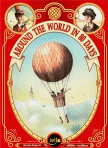
Pirates and home-made versions
François Haffner exchanged his copy of this pirated Czech edition for one of my only two remaining copies of Shoulder to Shoulder. Strange that lettuces are here replaced by apples. Does that make Bohemia a lettuce-free zone?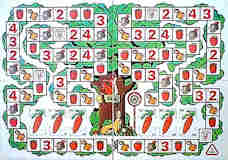
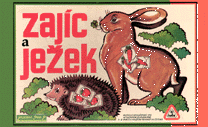
Bohemian pirate
Rudolf Rühle, of the European Society of Game Collectors (ESG) sent me these images of a 1986 Hungarian pirate with a motor racing theme. Quantities of fuel replace carrots, and lettuce squares have become compulsory pit stops.
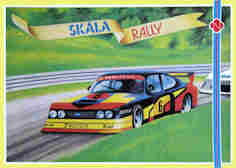
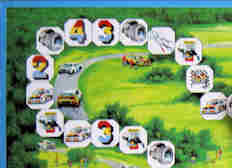
The Hungarian pirate
This Austrian promotional adaptation, apparently advertising an electrical company, (the principal characters are "Voltinger & Wattinger") was exhibited by Rudolf Rühle at the ESG stand at the 2011 Essen game fair.
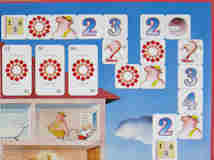
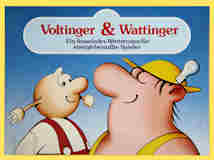
Austrian electrical promotion
In 1984 Wolfgang Großkopf, a games enthusiast in the GDR (German Democratic Republic), home-produced a one-off version of Hare & Tortoise using standard playing-cards for his hand-made board and renaming it "Energie". Großkopf similarly reproduced many other western games that took his fancy, and subsequently donated his entire collection of them to the European Society of Game Collectors, whose co-founder Rudolf Rühle kindly me with these images.
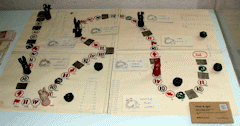
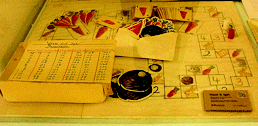
Two more home-made versions from the former GDR
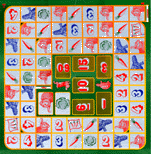
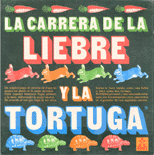
Spot the difference
Games collectors are intrigued by the fact that almost every edition or reprinting incorporates greater or lesser differences from the previous one. The most significant differences relate to the arrangement of the board, the number of carrots youy may not have more than upon reaching Home, and methods of jugging the hare. For details, see Rules of play and Jugging the hare. A relatively minor difference is that in some editions the squares are numbered backwards from 64 (immediately after Start) to 1 (immediately before Home), enabling you to see at a glance from any position how far it is to Home and thus how many carrots you need. This helpful guide first appeared in the second Intellect version (1976) and has been sporadically followed in subsequent versions of the game.Copyright

